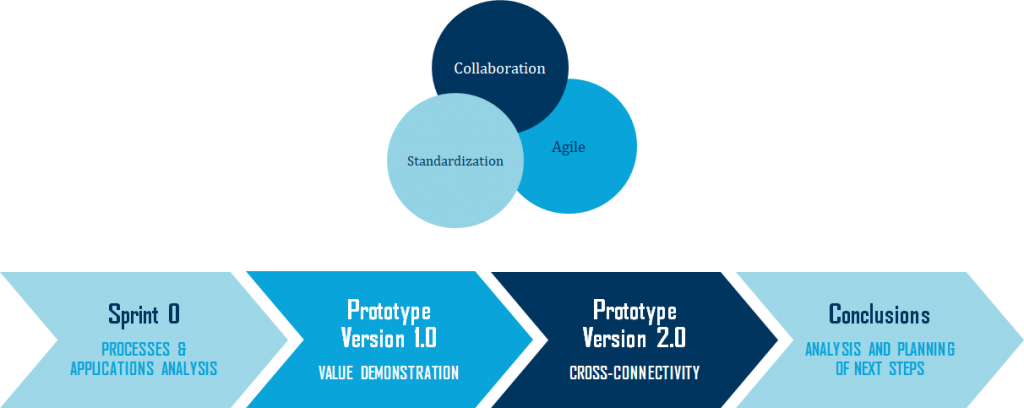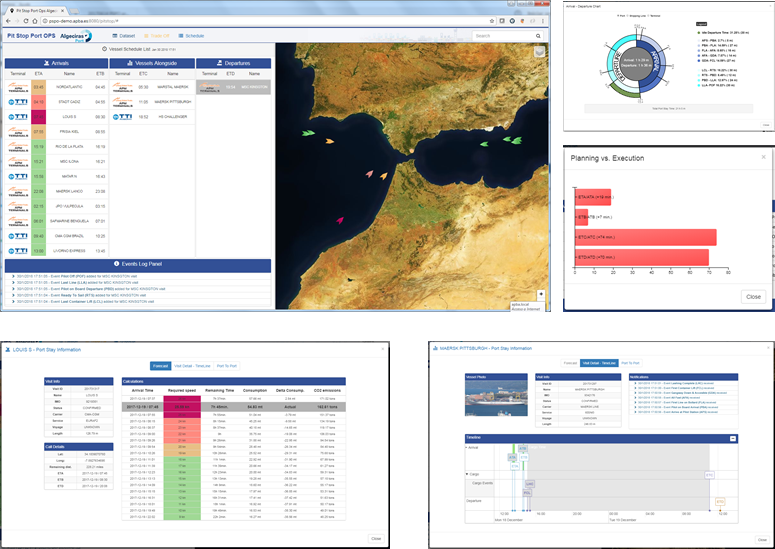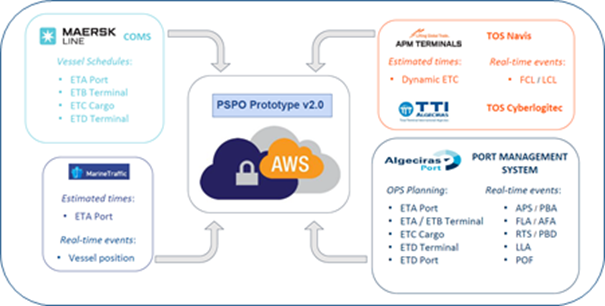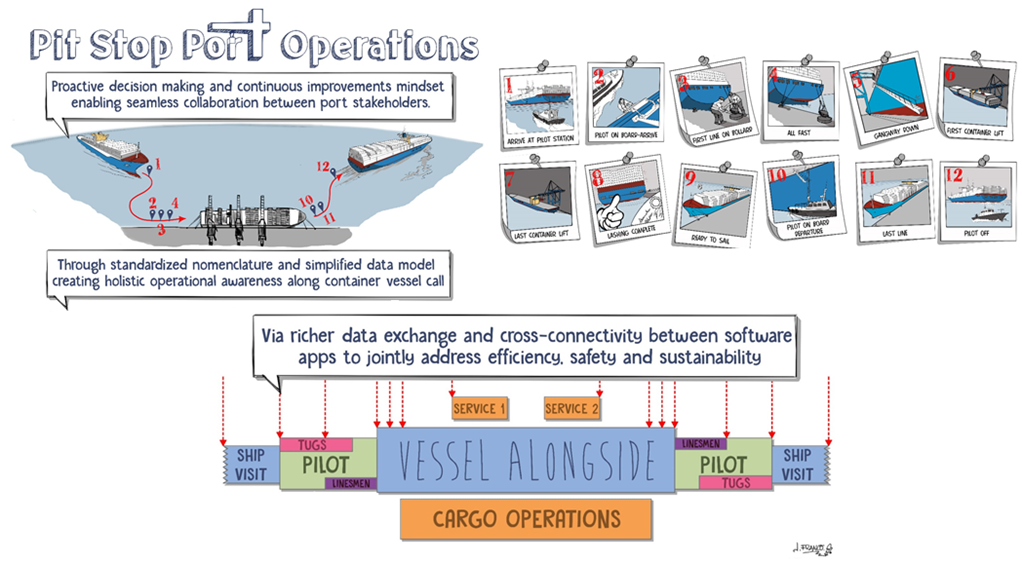Summary:
A pilot project which has explored the application of the Port Collaborative Decision Making concept regarding the optimization of operational processes related to port calls, through validated learning based on the development and implementation of a software prototype. To achieve this, an end-to-end approach has been applied, seeking to optimize both the entry – and exit operations and the loading – and unloading processes of the vessels. In addition, the scope has been limited to the container industry.
The following titans of industry were actively participating in the project:

Background:
It is estimated that 90% of world trade is transported by sea. This implies that the optimization of maritime and port operational processes has a great impact on both business (cost reduction) and society as a whole (e.g. reduction of pollution generated by ships).
On the other hand, studies conducted by Maersk Line indicate that 38% of the time container ships spent in ports is spent on entry and exiting manoeuvres, docking, undocking and waiting on port services, the remaining 62 % being dedicated to the actual loading and unloading processes. It has been assessed that the waiting periods, which usually occur at the entrance and exit, from the time the vessels moor until they start to operate, can be reduced considerably (with the need for funding in some cases) through greater transparency, more efficient data exchange between the cooperating actors and intelligent solutions that support the different processes. with the need for funding in some cases
Thus, to achieve greater efficiency in operations and reduce waiting times, there are different international initiatives (such as Port Call Optimization Task Force, STM Monalisa 2.0, etc.) that aim to adapt a concept that has been applied successfully for years in the airport business: Collaborative Decision Making. In our industry, the common name for this idea is Port Collaborative Decision Making (PortCDM).
It is fundamentally based on:
– ETA optimization: with the focus on supervising the shipping companys planning, based on accurate monitoring of the positions of the ship in real time, adjusting the planned ETA and comparing it with the real one.
– Optimization of berth management: providing the consignee and the shipping company complete and updated information about the availability of berthing. Offering the terminal more visibility in real time, regarding both ship-related information and the availability of port resources (pilotage, mooring, towing), as well as the status and evolution of the services provided to the ship.
– Optimization of the port process and visit management: providing greater visibility and coordination of operations during the stay of the vessel by sharing information via collaborative platforms with all the agents involved.
Project development:
Utilizing the apparently agile Scrum methodology, after defining the product vision, the first months focus was on analysing processes and the computer applications that supported them. We also worked on event standardization, aligning the standard with that of the Port Call Optimization Task Force, in which the Port of Algeciras partakes. A workshop was also held with the Rotterdam Logistics Lab, where the port-to-port interface was conceptually defined. With all of the above, the initial backlog was made for the prototype.

With the hitherto base and through 2 weeks of iterations, version 1.0 of the prototype was developed, centred around the demonstration of value with a focus on the user interface:

This version, which ran simulated data, was presented to all the participants in a workshop held in the end of July 2017. It demonstrated the benefits that parties would reap, were the exchange of data between all parties to increase. Thus, the decision to go one step further in the validated learning process was made. An agreement to connect the different applications of stakeholders was formed, transmitting real events during 10 days of real-data tests that were carried out in November 2017. A world class milestone was achieved in version 2.0 of the prototype:

Conclusions:
In this project, it has been demonstrated that collaboration, the sharing of significant data among all interested parties of a process, can produce significant improvements in efficiency. This validates the concept of Port Collaborative Decision Making.
The project’s innovation:
- A collaborative data exchange model that improves communication between players.
- Operational transparency and efficiency in container ship – scale processes (process innovation).
The project’s products:
- A software prototype.
- Proposed standardization of terminology and nomenclature.
- Analysis of container ship -scale operational processes.
- Functional analysis of container ship -scale IT systems.
- Synergy-report with other similar projects.
- Port-to-Port Optimization concept development report.
Applicability:
- Exploring the Port Collaborative Decision Making concept through validated learning.
- The future product or system (based on the validated prototype) would be extremely useful for the operational management of ship entry and -exiting in the Port of Algeciras. Potential users of the system would be: APBA Maritime Operations, the Practitioners’ Corporation, terminal operators, consignees, ship service providers, shipping companies etc.
Video demonstration:



